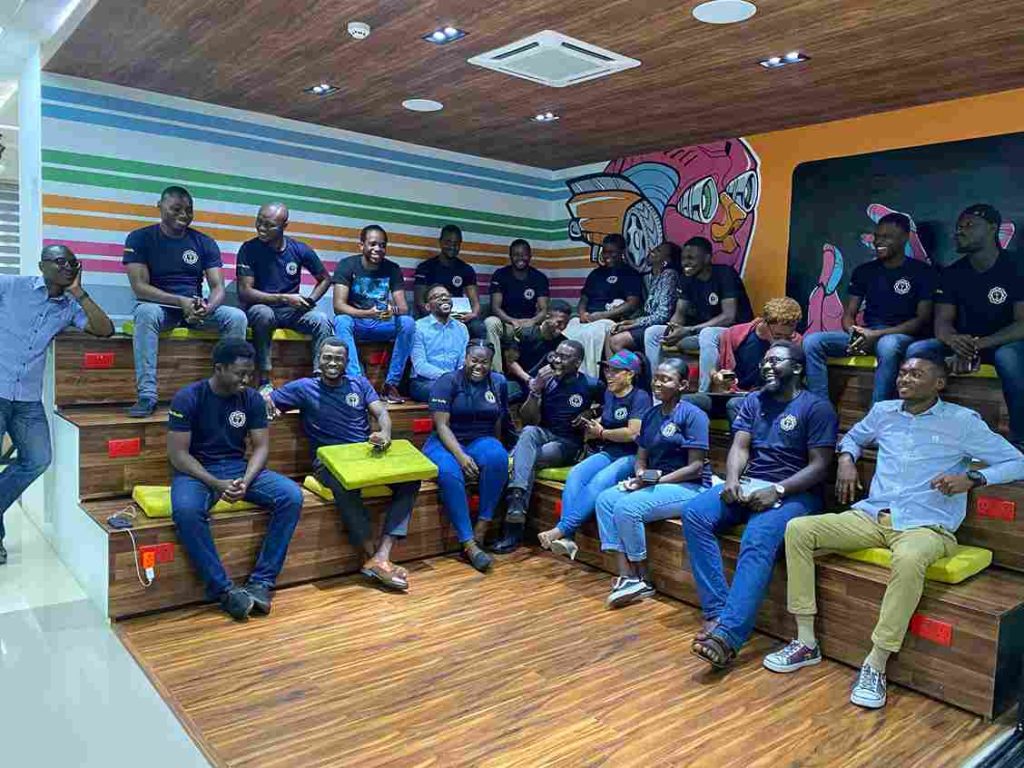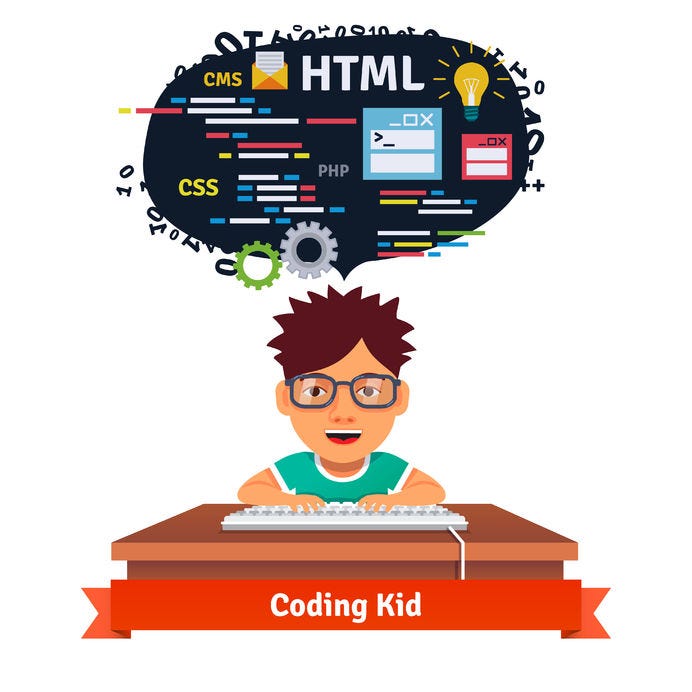Full-stack developers are tasked with handling the role of a back-end and front-end developer. They work with the server side of the application as well as the client side.
This means that they write code for the front and back ends of a given software. They design user interactions on the web application, develop APIs and RESTful services, and ensure cross-platform compatibility and optimization.
They also test, debug, and maintain software and responsive applications, among other responsibilities using stacks like MERN, LAMP and MEAN.
If you’re considering a career in full-stack web development, we have put together a guide to help you get started.
Difference Between Frontend and Back-end Web Development
As stated earlier, full-stack developers work on front-end and back-end web development. So before kicking off your journey, it is crucial to understand the differences between them.
Front-end web development, also known as client-side development, involves producing HTML, JavaScript, and CSS for a web application or website to enable users to see and interact with them seamlessly.
The front-end developer ensures that a site or app is designed to make it easy for users to see relevant information that is easy to read and understand. They make sure interaction is seamless and present information in an exciting and engaging manner.
However, back-end web development, also known as server-side development, involves everything users DON’T see. It is the “behind-the-scenes” work of everything that occurs when an action is performed on a website. It is a fascinating combination of servers, databases, APIs, and back-end logic.
Back-end developers write codes that make browsers communicate with the database and perform actions like reading, storing, updating, and deleting data.
Qualifications Required to Become a Fullstack Developer
Full-stack development is a highly competitive field, and while this translates to some form of job stability with an attractive salary, it also means it is a competitive field.
Employers today are looking to entrust their website or application to a qualified developer that can do an exceptional job. Thus, developers must equip themselves with essential skills, qualifications, and more to stand out and succeed in this field.
Ideally, a bachelor’s degree in software programming, computer science, statistics, mathematics or a related field is an excellent place to start as they provide foundational knowledge and skills to succeed in this career.
To really stand out, some developers opt for a master’s degree. However, not having a degree in these fields doesn’t mean full-stack web development is out of reach. Boot camps, fellowship programs and online courses are excellent alternatives to these degrees.

For Fellowships, I strongly recommend Fellowship at The Bulb Africa. The Fellowship program pays you to learn programming languages for six months with no prior knowledge needed!
Unfortunately, registrations for this program are currently closed. However, they will open back up soon, so follow our stay connected with us to be aware of any latest development.
Degrees and boot camps aside, to succeed as a full-stack developer, you must learn and become incredibly familiar with coding languages like HTML, CSS, and JavaScript. These are the primary programming languages that every website needs. So, it is imperative that you learn them.
As you continue to grow as a full-Stack web developer, you will come across and eventually learn more programming languages like Ruby, PHP, and Python. Additionally, familiarity with version control systems like GitHub, APIs like REST, a protocol like HTTP, database storage solutions like SQL and Apache servers will go a long way in making you the ideal full stack developer.
We also recommend having some knowledge of graphic design and equipping yourself with some visual communications skills. This is particularly handy when you handle front-end tasks. Lastly, while these skills are crucial for your career, they must be complemented with soft skills like efficient time management, attention to detail, creativity, curiosity, and multitasking ability.
Click here if you want to become a TECH BRO/SIS & and start EARNING BIG
Where Can You Start? — A Roadmap
One common problem with people who want to delve into full-stack development or tech, in general, is that they tend to be confused about where to start.
So here is a roadmap for prospective full-stack web developers:
Step 1, understand what web development is exactly.
Too many people attempt to become web developers without having a sound understanding of the entire concept. Do your best to avoid this, as it will eventually lead to confusion and slow down your learning process. You can gain this knowledge with a degree, during a fellowship or via online courses.
Step 2, take up HTML and CSS as they are the fundamentals for any web developer.
They are useful for developing static web pages. Start with CSS, then SCSS, Tailwind CSS, and so on.
Step 3, learn JavaScript basics and DOM manipulation.
If JavaScript proves to be difficult, use 3rd party plugins to boost your web pages. After you master the basics of JavaScript, I recommend taking a break to practice what you’ve learned so far. You may also learn the basics of jQuery to ease you properly into hardcore JavaScript.
When you feel you’re ready, move on to step 4, Advanced JavaScript.
A lot of people struggle with JavaScript, so it is okay to not get it at first. However, practice as much as you can and seek advice from senior colleagues as JavaScript is not only used in most modern websites but is also critical for the MERN stack.

Step 5, pick your front-end stack
At this point, you need to select one front-end stack, to begin with. You can choose Angular, React, Vue, or any other stack you prefer. However, I recommend React for beginners as it is easier to get into.
Step 6, Strengthen your front-end skills
The best way to strengthen everything you have learnt at this point is by implementing them in practical projects. Take your time, and practice as much as you can before heading on to the next step.
Step 7, pick your back-end stack
An important thing to note with back-end development is that it needs to be optimized occasionally. The entire process requires some form of critical thinking, and so, you must be patient as you learn.
While it can get incredibly frustrating, it can be just as exciting!
I recommend starting with Node.js and Express.js framework for back-end scripting. As you grow as a developer, you may also consider building your database knowledge by learning MongoDB and Postgres.
Step 8, Strengthen your back-end skills
This is the final step in this full-stack web developer road map. Practice. Practice. Practice.
Remember, back-end and even front-end skills are not learned in a month. Give yourself time and get immersed in practical projects to hone your skills.
How to Build Your Portfolio
A degree, Fellowship, or online courses may offer you highly sought skills, but that is just the first step in becoming a full-stack web developer. To gain full-time employment at your dream company or attract clients as a freelancer, you need an impressive portfolio.
Internships or volunteer positions are the best way to build your portfolio as a beginner. While they may not offer much in terms of money, they go a long way in helping you gain significant experience as you get to solve real problems and build exciting websites and applications.
Volunteer to work on a couple of projects or intern at an organization in need of your skills. Depending on how much you do and how well you perform, you may have a portfolio outstanding enough to land you a full-time role in no time.
Click here if you’re looking to build a successful career in tech within 4 – 6 months.
Full-stack Web Development Communities You Can Join to Build Your Network
Like most career paths, communities offer immense benefits, and this applies to full-stack web development communities as well
They help you:
- Connect with other developers
- Gain new insights
- Stay updated on the latest industry trends
- Connect with mentors and industry experts
Some web development communities you could join include GitHub, Freenode and Reddit’s Webdev. For beginner full-stack web developers, I recommend The Bulb Africa’s Women in Tech Community called Tech Jewel.
These communities are your go-to resources for jobs, news, tips, industry trends, and networking.
What and Where to Read

As a full-Stack web developer, you must keep learning to stay on top of trends and any significant changes in the industry. As technology continues to evolve, so must you.
To easily keep up with new trends and the latest industry insights, visit websites like Tuts+ Code, SitePoint, and Smashing Magazine. For beginners, Tuts+ Code is particularly helpful as it offers an extensive portfolio of over 1,000 courses and 70 eBooks on full-stack development, web design, and other tech courses.
Additionally, read books like The Full-Stack Developer by Chris Northwood, Modern Full Stack Development by Frank Zammetti, ASP .NET Core 3, and Angular 9 by Valerio De Sanctis.
These books offer industry-standard knowledge on everything full-stack and can be found on Amazon or your local bookstore.
Conclusion
To bring this to an end, I want you to know that your journey to becoming a full-stack developer may not necessarily be easy. It will come with its share of frustrations, fear, and other blockers. When this happens, discuss with peers, pick up a book and then TRY AGAIN.


